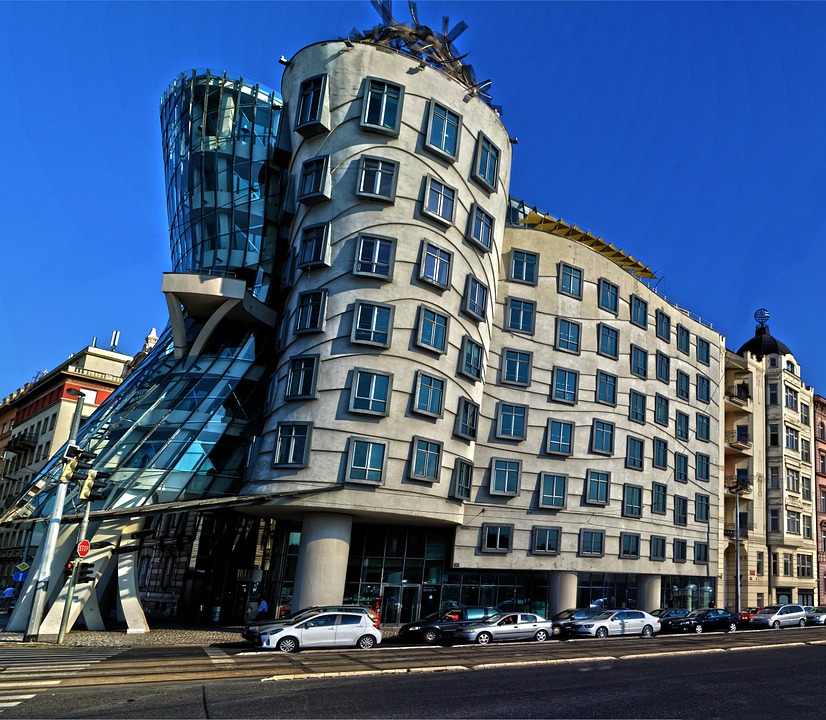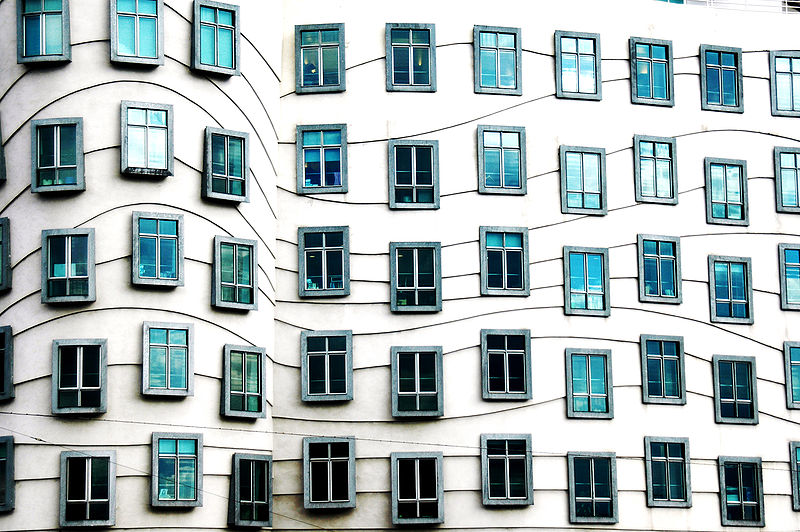The Dancing House of Prague

With the intention of creating an iconic building in Prague, the Dutch bank, Nationale-Nederlanden (previously ING), commissioned legendary architects Frank Gehry and V. Milunic with the task of building a truly innovative structure; armed with a bottomless pocket and complete artistic freedom, that’s what they did.
Location
The building is found on Resslova Street (Rašínovo nábřeží 80), on the right bank of the Moldova River (in Czech, Vltava) and close to the Karlovo Námestí metro station, in the centre of Prague, Czech Republic.
Conception and Design
During the Second World War, an American bomb destroyed the house which was originally where the Dancing House now stands. The land was bought by insurance firm, Nationale- Nederlanden. The company had initially got in touch with the architect, V. Milunic who invited Jean Nouvel, but he turned down the project due to its small surface area (491 m²). Milunic then approached Gehry, who accepted the commission. The Dancing House’s construction began in 1994 and was completed in 1996. The focus of the design was a contrast between static and dynamic figures. Turning on the corner where the building would be constructed, a pivoted tower was a logical starting point. With its clear-cut deconstructivism and unusual form, the style of the building was considered to be “new-baroque”.

Credit: Mounirzok / CC BY-SA 4.0
The Structure
Each of the two towers is essentially a distorted cylinder. The diameter of the solid dominant male tower expands as it travels skyward, while its glazed female partner is dramatically girdled at the waist. The Glass Tower was dubbed Ginger, while its Concrete counterpart was called Fred. The buildings, with a surface of 5842m², were constructed in steel, glass and prefabricated concrete panels, finished with plaster characteristic of the local architecture. The architects decided not to paint the exposed materials, but to display their natural colours: the green glass, the grey concrete and the steel structure.
On the ground floor of the building, between the large circular pillars, there are shops, a hotel and a small cafeteria, among other attractions. This area at ground level allows for the building to be much less isolated than traditional office developments.
Reception
Although it received the 1996 design category award from the prestigious American Time magazine, the building was very controversial from its beginnings. Not only did it stand out stylistically, but it was very out of place in its more traditional Prague setting. Some critics were so put off by its asymmetrical nature, they dubbed it ‘Drunk House’. Even today, it continues to be contentious between the citizens disgusted by the building, considering it out of place in a conservative context, and those who see it as a symbol of freedom, liberation and democratic beliefs after the fall of communism.
No matter what though, one cannot deny its presence. The building is surrounded by elements of great plasticity, which in spite of its de-constructed style, harmonises with the environment. It is one of the few buildings in the city which inhabits its space in the street in such a dynamic way.
Leave a Reply